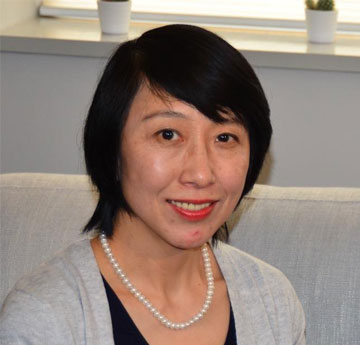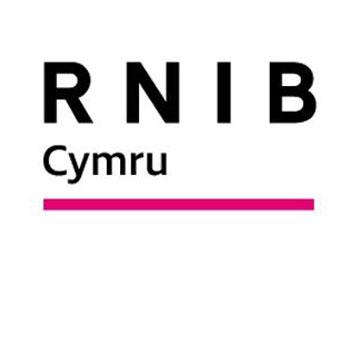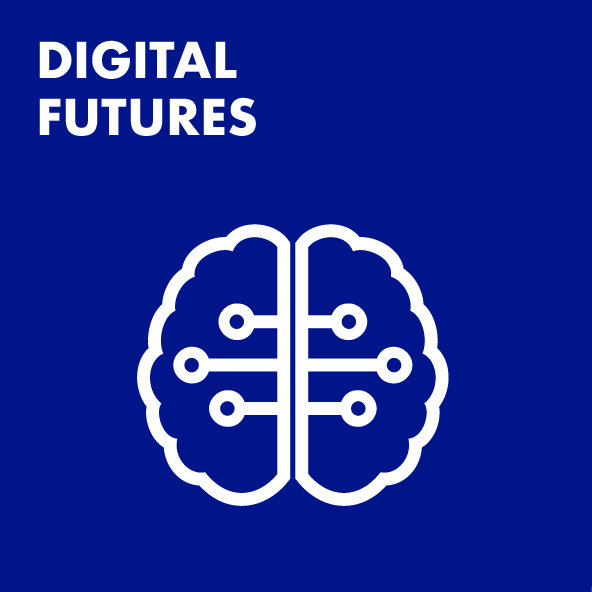The Challenge
Digital exclusion is a major challenge faced by sensory impaired users in Wales with the digital switchover of television and the broader digitalization of services and information having both brought risks of exclusion, ‘digital gaps’ and the erosion of communicative rights.
Digitally excluded people tend to be associated with demographic attributes such as age, disability, economic status, education, etc. According to Digital Communities Wales, digital exclusion tends to affect people who are aged over 65, have disabilities or long-term health conditions, have lower education attainment, are from low socio-economic status, live in rural areas, speak Welsh as their first language, are socially isolated and/or homeless. It is often less noted that these demographic attributes could be co-related. Certain disabilities are often age-related, and a reduced ability (such as sight impairment) could affect employment and the socio-economic status of the individual or family.
According to the Royal National Institute of the Blind (RNIB), there are over two million people living with some form of sight loss in the UK and 107,000 of them reside in Wales (RNIB 2017). Data shows that although significant recent progress has been made to widen access to communication technologies in Wales, visually impaired users are still disadvantaged when accessing information and digital services.
The method
Dr Yan Wu and her team, incorporating staff from media and communication and computer science, set out to provide a detailed examination of sensory impaired community’s access to and usage of digital technology, focusing on measures in reducing digital skill gaps and current challenges associated with accessibility of information, services, devices, software and applications.
All the work has been carried out since 2011 in three different phases:
- In Phase 1 of the underpinning research Professor Wu led a consortium funded interdisciplinary research team, which conducted a Wales-wide survey of hard of hearing audiences’ use of digital television in 2013. The outcome of this research revealed that hard of hearing audiences proactively use digital television for information, education, entertainment, and services, but that they face difficulties in accessing quality subtitling and customized services.
- Phase 2 of the underpinning research (2016-2018) was based on close collaboration with RNIB Cymru, and comprised an in-depth survey of RNIB Cymru members, conducted between March and May 2017.
- Phase 3 of the research (2018- present), in continued collaboration with the RNIB, has developed into a longitudinal study of preferences for and usage of new digital technology by sensory impaired users. This is based on a series of focus groups with repeat participants to develop an enhanced evidence-based understanding of the problems and needs of sensory impaired users in negotiating new digital technology, and how then to develop services to support them.
Each phase was facilitated by funding from several sources. Specifically phase I, focusing on academic and practitioner interest in the implications for the hard of hearing of television digital switchover, was funded by Swansea University’s Bridging the Gaps programme, Action on Hearing Loss, BBC Cymru, S4C and the Coleg Cymraeg (2011-2015). Phases II and III, which broadened the focus to academic and partner interest in the implications for people with sight loss and dual sensory impaired users of the broader development of new digital technologies, were funded by the EPSRC supported Challenging Human Environments and Research Impact for a Sustainable and Healthy Digital Economy (CHERISH-DE) (2018 – 2021). The current Phase (2021 – present) is funded by Swansea University's Greatest Need Fund and aims to bring positive changes to the sensory impaired staff and student community by enhancing post-pandemic digital skills and literacy.
This research promoted cross-disciplinary research in digital humanities within Swansea University and reflects the true diversity in terms of gender, race and ethnicity within the University’s research community and furthers Swansea University’s civic mission of promoting equality and inclusivity. The portfolio of projects also created a positive research environment to support PGR students and early career researchers.
The impact
The research has had an effect on the awareness and understanding of these challenges in Wales by elected representatives, broadcasters, Action on Hearing Loss (now Royal National Institute for Deaf People), and the Royal National Institute for the Blind (RNIB).
In addition to the publications in English and Chinese medium academic journals, the research produced a series of reports that had positive impacts on media practices and digitalization policies in Wales.
A report entitled Digital Television and Deaf/Hard of Hearing Audiences in Wales in 2014 was regarded by survey participants as a timely intervention in an area of digital exclusion that had been overlooked by policymakers and campaigners and was presented to Wales All Party Group on Deaf Issues. Its resultant recommendations on improving subtitling service for sensory impaired users were adopted by S4C, with the aim of benefiting access for hard of hearing television users. Other findings from the study including increased attention by the regulator and more innovative and powerful interventions in the form of statutory requirements was endorsed by Welsh politician Ann Jones AM.
The output of the second phase of the study, a report entitled Digital Media Usage of Sensory Impaired Users in Wales 2018, revealed how digital exclusion could be generated by a range of factors, including financial constraints, access to training opportunities, web accessibility and technology design. Its recommendations for improved digital inclusion highlighted the need for sustained training and support, the application of alternative technologies, and adherence to British Standard web accessibility protocols. RNIB regarded the research was the first of its kind to be carried out in Wales and generated wider interest in the issue beyond Wales. The research on the challenges of broader digitalization has led to changes in RNIB Cymru policy on how it provides technology and digital skills services for people with sight loss. For example, a short ‘cross-over’ related piece by Wu was published by The Conversation later in 2018. This attracted over 4,500 views from countries including the US, France, India, Canada, the Philippines, Singapore, South Africa, and Malaysia and was reposted by various international media outlets
Based on research from Phase three, a report was consequently released on World Sight Day 2021. Mr Gary Brunskill (RNIB Specialist Lead in Assistive Technology and Digital Inclusion) commented that the work “changed the way RNIB approaches the issue in Wales and allowed our technology and digital skills programmes to be designed, informed and more tailored to Blind and Partially Sighted people”. The research has had an effect on the RNIB’s development of its Design for Everyone Campaign and award. This has aimed to inspire businesses and designers to embed design principles in new digital technology, which take people with sight loss into account. The findings of the research were also presented at a Welsh Vision Inclusion Strategy meeting, as well as to the Welsh Government’s Digital Inclusion Programme Board. The research report has also been placed in the Welsh Government’s library of resources for future policy makers, and programme designers to access, and inform design of services across Wales.









